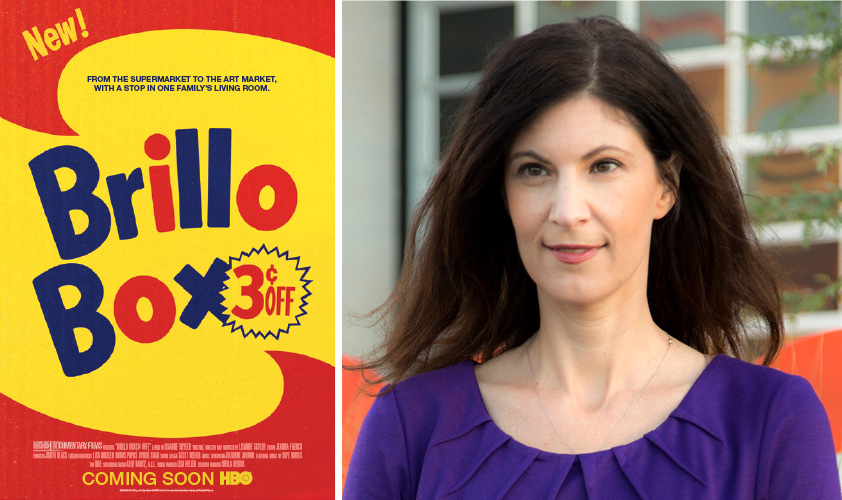Sound Decisions

By Lisanne Skyler
I admit it: I came to SF State with just a small amount of attitude. I had graduated from UC Berkeley straight to my first job at the San Francisco Film Festival, which gave me access to movies from all around the world, and even more critical, to conversations with international film directors at smoke-filled Tosca’s in North Beach. (This was the ’90s.) I had even made an experimental film that showed at Craig Baldwin’s The Other Cinema theater — a rite of passage for all Bay Area filmmakers. I was pretty sure I knew what I was doing.
So I wasn’t prepared for the day I entered Room 121 of the Creative Arts building to show Professor Karen Holmes’ second-year production class the 16mm answer print of Oldtimers, a cinema verité-style portrait of the elderly regulars of the Mission District Irish bar McCarthy’s (where you can now buy tapas). In the pre-digital years, a 16mm answer print was the first time the picture and final sound mix were married. In other words, it was the benchmark that said you were done.
After the film rolled out, I went to the projector to rewind the film. No one said anything. Then Professor Holmes turned to the room with a mysterious smile and said, “Remember, everyone — this is only a first answer print.” Then she turned to me and said, “You can still make changes.”
Cued by Professor Holmes, hands started popping up around the room. People were wanting more sound design. Because it was a “documentary,” it hadn’t actually occurred to me to add sound effects, much less design them. Which is to say that the expressive potential of the film wasn’t fully explored.
I went back to McCarthy’s and recorded more sounds, then back to the editing room to build more tracks, then back to the sound stage to remix, then back to the lab to redo the answer print all over again, all the while thinking that this film was never going to end. Then we submitted it to the Cinema du Réel film festival in Paris, where it was accepted and programmed in a survey of American documentary cinema, screening alongside landmark films like The Plow That Broke the Plains, The City, Salesman and Harlan County, USA.
I guess you could say that, on the surface, that day at State I learned the importance of sound, and the joy of discovering film as a sound medium is something I never forgot. But I think that l learned something larger. Professor Holmes didn’t dictate or insist I make changes. The choice was mine to make. What kind of filmmaker would I choose to be?
Later, I would realize how Professor Holmes’ words perfectly encapsulated a teaching philosophy that I encountered throughout my career at State. We were treated as professionals, and our teachers, filmmakers themselves, were there to give us honest feedback and help us creatively problem-solve. They taught us to be flexible and to keep evolving as artists and storytellers.
At SF State, I next turned my camera on a pawnshop in the Watts community of South Central Los Angeles as it sought economic recovery in the wake of the 1992 riots. Later, I would turn to writing and directing fiction films and working as a screenwriter on assignment. (As a screenwriter, you can always make changes, which is why they call this phase of filmmaking development.)
But that day in Creative Arts room 121 resonated the most as I was editing my most personal film, the HBO documentary Brillo Box (3¢ off).
Brillo Box (3¢ off) tracks the surprising journey of an Andy Warhol Brillo Box sculpture my parents once owned, blending family narrative with Pop Art history. Despite the personal nature of the film, I was adamant that there was not going to be any voiceover. I wanted to stay with the minimalism of my past films, and voiceover seemed to carry a high risk of overstating things. Besides, I had never narrated a film before. The prospect was a little terrifying.
But for each cut, the feedback remained the same. HBO Documentary Films President Sheila Nevins and VP Lisa Heller both felt the film needed to be much more personal. I tried everything I could — including making first-person text cards — to avoid that voiceover booth.
Finally, Sheila observed that what the film was still missing was my voice. She suggested that not only should I try narration, but that my voice should actually carry the film.
I was instantly brought back to that day in Creative Arts 121. I immediately knew the choice I wanted to make. I picked up my iPhone and pressed “record.” I could still make changes.
Lisanne Skyler is the writer/director of numerous award-winning fiction and documentary films, including No Loans Today, Getting to Know You, Capture the Flag and Brillo Box (3¢ off). Brillo Box (3¢ off) was an official selection of the 54th New York Film Festival and debuts on HBO in Aug. 7,2017